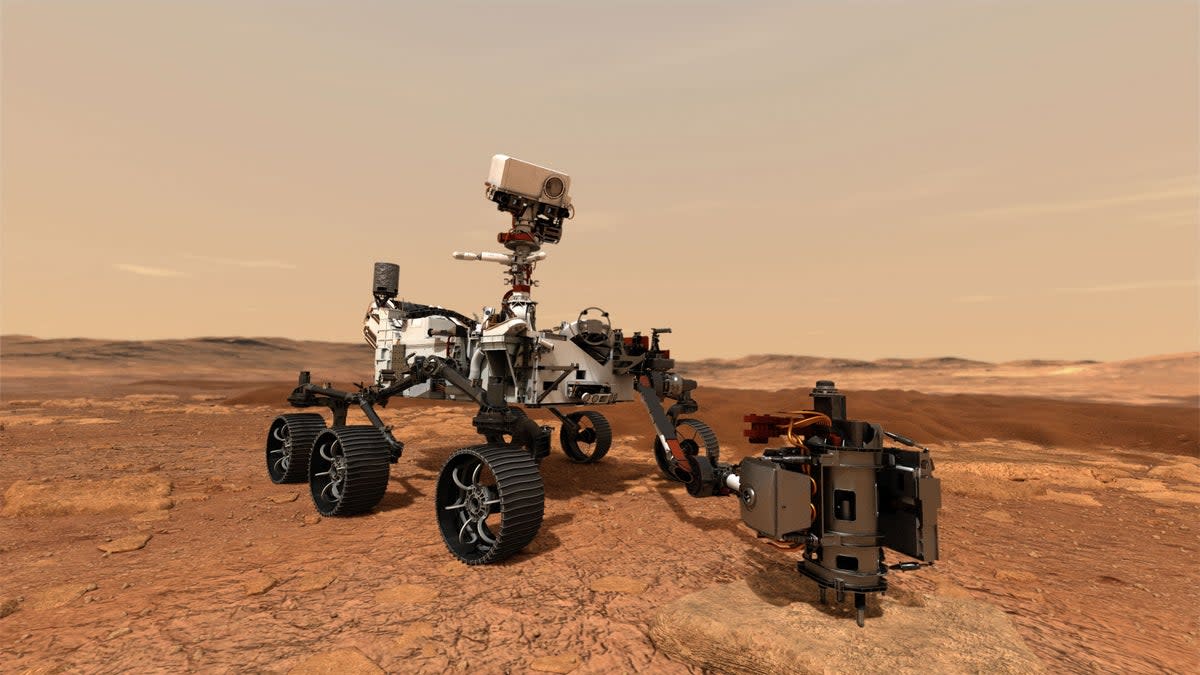How will Martians get their vegetables? Scientists find clues in a health store favourite

When Mark Watney, the astronaut played by Matt Damon in The Martian, found himself abandoned on Mars, food became a top priority.
Watney ends up using human waste to fertilize not-so-loamy Martian soil and grows potatoes. But now, a group of scientists may have figured out a less unpleasant manner of kickstarting a Martian vegetable patch.
A new study, published on Wednesday, has found that alfalfa seeds can grow in soil that mimics Martian dirt. Alfalfa is nutritious in its own right but the study also discovered the sprouty plant can be composted to fertilize the soil and boost growth for vegetables like turnips, radishes and lettuces.
While the research is far from being applied in real life (there are currently no planned human missions to Mars), it’s another step forward in understanding how humans might survive on the Red Planet.
“I think it is important to have studies like this that do help to give us some sense of the feasibility,” Elizabeth Swanner, a biogeochemist at Iowa State University and one of the study authors, toldThe Independent.
“Could we provide all the caloric and nutritional needs for astronauts by growing the material on-site? That’s a much larger question.”
Real Martian soil (or regolith, as dirt from some other planets is known) is hard to come by. The only examples on Earth have come from meteorites, Dr Swanner said.
But researchers at Iowa State were able to simulate that regolith (which was lower in nutrients than regular garden soil) by crushing up volcanic rocks.
Alfalfa, also known as lucerne, grew rather well in the simulated regolith without additional fertilizers or nutrients. When the simulated regolith was then treated with some of the broken-down alfalfa, the turnips, lettuce and radishes all grew much taller than in the bare soil.
In theory, human visitors to Mars might be able to use alfalfa to make a more fertile soil out of the harsh Martian dust. But there is be plenty more to figure out before that’s feasible.
Dr Swanner pointed out that the plants grown were not particularly calorie-dense, and if trying to survive on a planet as harsh as Mars, enough calories on a daily basis would be crucial. Future research could look at whether different types of crops, like beans, could be grown in the same conditions, she added.
Questions also remain over how alfalfa composting system would work in space. There would probably need to be a self-contained, Earth-like atmosphere for the plants to grow in, for example.
Perhaps most importantly, humans don’t yet have the technology to transport people to Mars and back to Earth, despite Elon Musk’s dreams of colonizing the Red Planet.
But the research, published in the academic journal PLOS ONE, may have applications right here on Earth.
The climate crisis is wreaking havoc on soil systems around the world as drought dries out croplands and whole regions become more arid.
But as the planet heats up, it’s possible that regions unaccustomed to growing crops, like the Artic, will become warm enough to do so, Dr Swanner pointed out. It makes the research on how to boost soils relevant for non-space-based agriculture, too.
“I think it goes beyond just applications for Mars,” she says.

 Yahoo News
Yahoo News 
